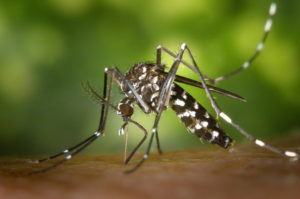A major component of Zika eradication is to produce gamma-irradiated sterile mosquitoes. Within the next fews months IAEA will send a gamma cell irradiator to Brazil’s Moscamed research center in Juazeiro. The irradiator will allow the research center to produce up to 12 million sterilized male mosquitoes per week. The mosquitos will be released in 15 areas that have been hit hard by Zika and will reach up to 750,000 people.
The process begins with using gamma rays to sterilize male mosquito pupae. The mosquitos are then raised in huge numbers and released into the wild where they compete with wild male mosquitos. If enough sterile males mate with females, the chance of producing offspring is significantly lowered, causing a crash in the mosquito population that is spreading the Zika virus.
Throughout the years, this same technique has been used in reducing other problem insects. When populations of moths and fruit flies in the US have been extremely problematic, this technique has brought their populations under control. This method also reduced the problematic and disease spreading tsetse fly problem on the island nation of Zanzibar.
Scientists are hoping this technique will help decrease the mosquito population, especially since results with mosquitoes previously have been not as successful. Gamma-irradiated male mosquitoes don’t seem to be as successful at mating with females as their wild counterparts. In the meantime, scientists are looking for alternative methods to sterilize males which includes using X-rays. The enormous amount of insects needed to keep populations in check is also staggering. A facility in Guatemala has to produce more than 2 billion sterile Medfly fruit flies per week in order to keep populations down in areas of Guatemala and California.
The IAEA admits the gamma method for reducing mosquito populations is still in its pilot stages, and long term results from Italy, Indonesia, and China have been encouraging. The next steps for Zika control is disease reduction as well as more research that verifies survival as well as early detection equipment. The IAEA is currently delivering virus detection equipment to Latin American and Caribbean countries with equipment training to be available in late March.



